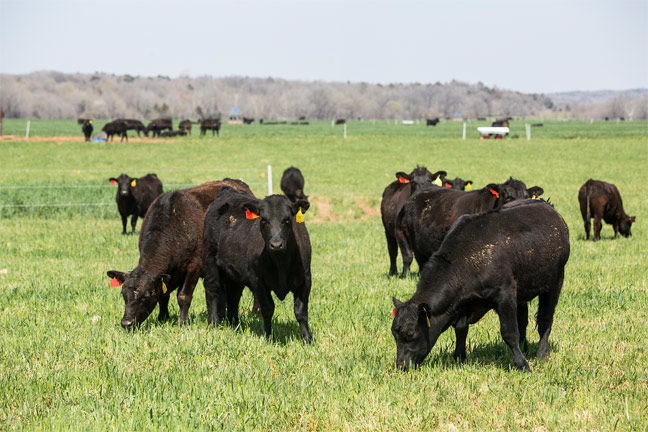
Agricultural News
Understanding Purchase Signals and When to Buy Stockers Made Easy with a Few Considerations
Mon, 19 Sep 2016 11:23:41 CDT
 Mondays, Dr. Derrell Peel, Oklahoma State University Extension Livestock Marketing Specialist, offers his economic analysis of the beef cattle industry. This analysis is a part of the weekly series known as the "Cow Calf Corner" published electronically by Dr. Peel and Dr. Glenn Selk. Today, Dr. Peel explores the numerous decisions producers must make when purchasing stocker cattle.
Mondays, Dr. Derrell Peel, Oklahoma State University Extension Livestock Marketing Specialist, offers his economic analysis of the beef cattle industry. This analysis is a part of the weekly series known as the "Cow Calf Corner" published electronically by Dr. Peel and Dr. Glenn Selk. Today, Dr. Peel explores the numerous decisions producers must make when purchasing stocker cattle.
"Stocker producers have numerous decisions to make when purchasing stocker cattle including the weight, gender, and quality of cattle to buy. The appropriate choice for individual producers depends on the objectives of the stocker program and the type of production system. Feeder cattle price relationships at any point in time can help sort out market incentives for stocker purchases.
"Feeder cattle prices by weight typically reflect the cost of gain that feedlots face. In other words, the feedlot cost of gain will indicate the tradeoff that feedlots face in buying lighter weight versus heavier feeder cattle. The red line in Figure 1 shows the equivalent price of lighter weight feeder cattle compared to heavy feeder cattle assuming an average $75/cwt. feedlot cost of gain.
"All else equal, a lower cost of gain (cheaper grain) will make the red line steeper, implying a sharper rollback in feeder prices as weight increases. Conversely, higher cost of gain will flatten the red line demonstrating that feedlots can afford to pay less for light weight cattle when the cost of gain increases. Oftentimes and on average, the red line will coincide very closely with observed feeder cattle prices by weight indicating that feeder markets are in "equilibrium" meaning that the value of putting weight on cattle ahead of the feedlot is roughly equal to the cost of putting weight on in the feedlot.
"However, it is very apparent that the blue line in Figure 1, representing current average market prices in September, diverges significantly at lighter weights from the red line. In other words, lightweight feeder cattle appear to be underpriced relative to feedlot value at the current cost of gain. It appears that feedlots have a preference for heavy weight cattle and sufficient supply such that their demand for lightweight feeder cattle is less. The resulting slump in lightweight feeder prices is simultaneously an opportunity and a purchase signal for stocker producers. The implied value of gain for lightweight stocker cattle is higher than the feedlot cost of gain and is averaging from $1.00/pound to about $1.15/pound. The market is encouraging stocker based gains in feeder cattle weight, apparently with the blessing of feedlots.
"The blue price line in Figure 1 is not a smooth line but includes a kink at about 600 pounds with a steeper price line to the left and a flatter line to the right. This translates into the highest value of gain at weights between 600 and 750 pounds. Stocker producers typically purchase lightweight stockers, say 450 to 500 pounds and may still want to do so. However, if less weight gain is an objective, for example, in the situation where a producer is considering two sets of stockers this winter to graze out wheat, then purchasing slightly heavier cattle may be worth considering.
"These considerations help stocker producers understand purchase signals at the current time. Of course, the ultimate value of gain depends on market values for cattle at the time of sale. The risk considerations of owning cattle over time and the challenges of managing that risk are additional considerations beyond the purchase opportunities in the current market."
WebReadyTM Powered by WireReady® NSI
Top Agricultural News
More Headlines...




















